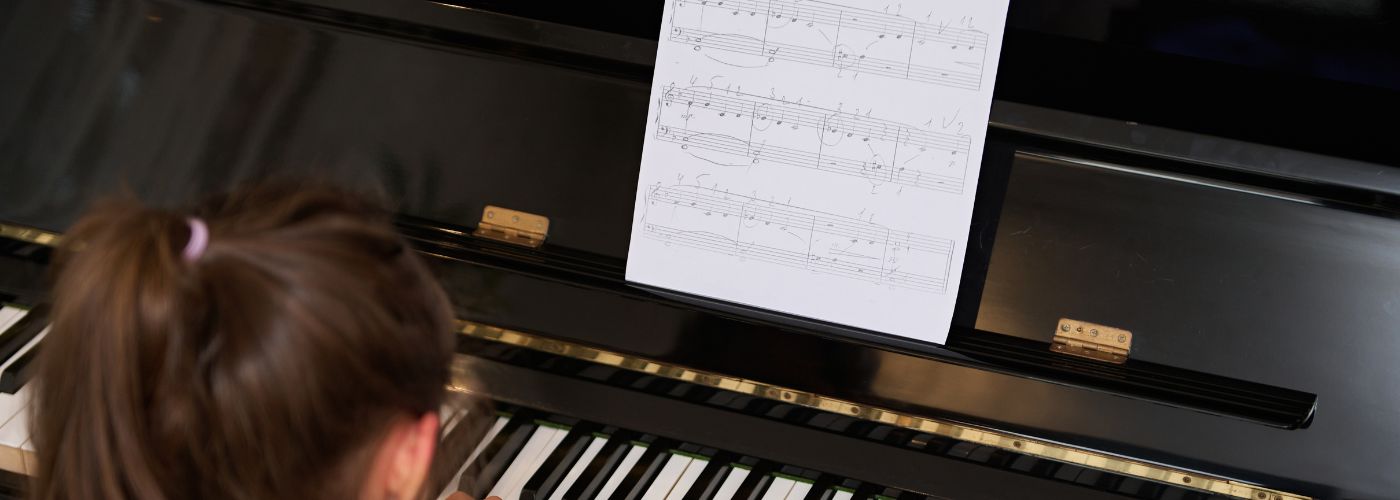Have you ever felt frustrated trying to keep up with sheet music during a rehearsal? You’re not alone — many musicians struggle with sight reading, yet it’s a crucial skill that can elevate your playing to new heights. In this article, we will dive into how to practice sight reading effectively, providing you with actionable techniques and insights.
Ways To Practice Sight Reading
Practicing sight reading effectively can significantly improve your musical abilities and boost your confidence when tackling new pieces. One helpful method is to regularly expose yourself to a variety of music styles, as this will broaden your understanding of different rhythms and melodies.
Try setting aside specific times during the week dedicated solely to sight reading; consistency is key in developing this skill. When you sit down to practice, consider using a mix of instruments or even vocal exercises, as this variety keeps things interesting and reinforces learning in multiple contexts.
It can also be beneficial to read music aloud before playing it; saying the notes out loud helps reinforce their names and positions on the staff. Additionally, don’t shy away from challenging yourself with slightly more complex pieces than you are comfortable with; pushing your limits helps you grow as a musician.
Start with Simple Sight Pieces
To effectively learn how to practice sight reading, start with simple sight pieces that match your current skill level. This allows you to build confidence and develop a solid foundation. Choose short melodies or easy exercises that challenge you just enough without causing frustration.
Select musical pieces that are familiar in terms of rhythm and structure, as this will help you focus more on reading the notes rather than deciphering complex rhythms. As you progress, gradually increase the difficulty of the pieces you select, incorporating a variety of styles and genres to broaden your musical exposure.
Additionally, consider setting a regular practice schedule dedicated solely to sight reading. Consistency is key, so try to allocate a specific time each day or week to focus on this skill.
Use a Metronome for Timing and Rhythm
To effectively practice sight reading, using a metronome for timing and rhythm can significantly enhance your sight-reading skills. Set it at a slow tempo initially, ensuring you maintain a steady beat as you read through the piece. As you gain confidence, gradually increase the tempo.
When practicing, be sure to focus on maintaining a smooth flow of music rather than getting caught up in mistakes. If you encounter a challenging passage, try to keep your eyes moving ahead instead of fixating on the notes you just played. This helps develop your ability to anticipate what’s coming next.
This approach not only improves your rhythmic accuracy but also helps you develop a sense of flow, allowing you to play more fluidly when encountering new pieces.
Incorporating Daily Exercises into Your Routine
To effectively practice sight reading, start by incorporating daily exercises into your routine. Set aside just 10-15 minutes each day to focus on this skill. Choose a variety of music pieces across different genres to keep things interesting and broaden your exposure.
As you read, try to maintain a steady tempo without stopping to correct mistakes. This will help you develop the ability to flow with the music rather than getting bogged down in details.
Another great technique is to engage in “chunking.” Instead of reading note by note, try to identify patterns or phrases in the music. This allows your brain to process information more efficiently and can make sight reading feel less daunting.
Another great practice is to incorporate rhythm exercises into your routine. Clapping or tapping out rhythms before playing the notes can help internalize the timing and feel of the piece.
Additionally, consider using a metronome to keep a consistent tempo while you practice. Start at a slower speed to ensure accuracy, then gradually increase the tempo as you become more comfortable.
Use Flashcards for Quick Note Recognition
One effective way to enhance your sight-reading skills is to use flashcards for quick note recognition. Create a set of cards with different notes or symbols on one side and their names on the other.
Spend a few minutes each day going through these flashcards, testing yourself to see how quickly you can identify each note. This simple exercise can significantly improve your ability to recognize notes at a glance, making it easier to read music during practice or a piano lesson.
One great exercise with flash cards is to incorporate a timed element. Set a timer for one minute and see how many flashcards you can correctly identify within that timeframe. This not only adds a fun challenge but also helps simulate the pressure of sight-reading in a performance situation.
Focus on Rhythm Before Pitch Accuracy
To effectively practice sight reading, start by focusing on rhythm before pitch accuracy. Many musicians get caught up in hitting the right notes and end up losing the flow of the music. By prioritizing the rhythm, you train your brain to internalize the beat and timing, which forms the backbone of any piece.
Use a metronome to maintain a steady tempo, allowing you to concentrate on the rhythmic patterns without getting sidetracked by challenging notes.
Another helpful tip is to preview the piece before diving in. Take a moment to scan through the music, noting key signatures, time signatures, and any tricky spots. This mental preparation sets you up for success and reduces anxiety when you start playing!



Continue Reading
Best Age to Start Kids Piano Lessons
Most kids show a natural curiosity towards music, but when is the right time to
Nov
How To Practice Sight Reading
Have you ever felt frustrated trying to keep up with sheet music during a rehearsal?
Oct
Overcoming Challenges When Learning Piano As An Adult
Many adults assume that learning piano as an adult is an uphill battle reserved for
Sep